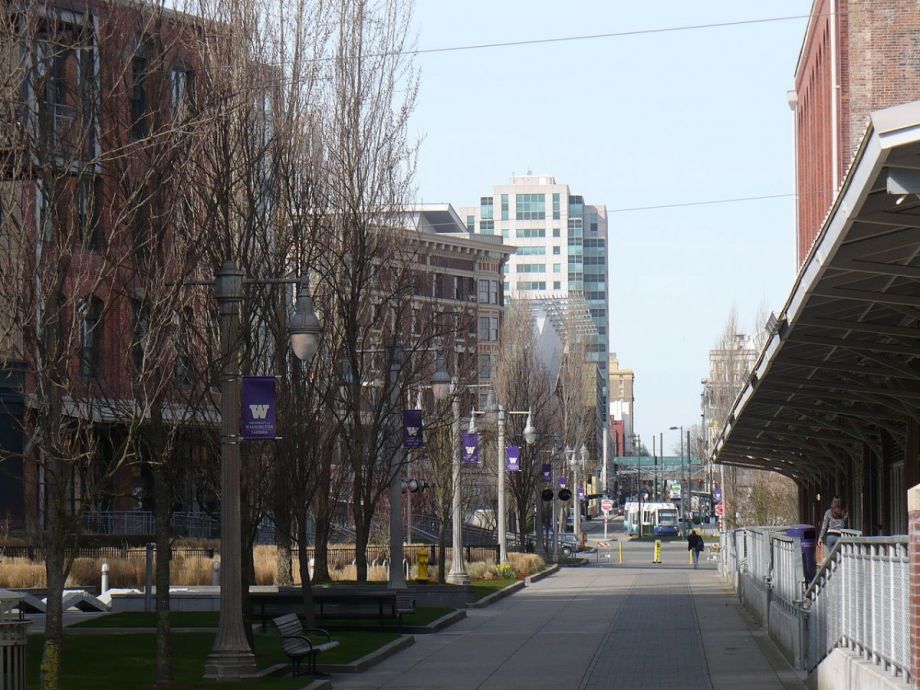For decades, Tacoma, Washington has been the estranged cousin of Bellevue and Seattle (each less than 50 miles away). Blight, crime and vacant lots occupied the post-industrial areas of town.
When the Tacoma Mall was built five miles south of the city center in 1965, it drained downtown of many of the retail establishments that were left. By the ’80s, civic leaders were searching for something big to ignite a renaissance. Enter the University of Washington-Tacoma.
Now, almost three decades later, a transformation appears to have taken hold. UWT successfully readapted once-dilapidated buildings in a warehouse district. There’s a flourishing restaurant scene and a gleaming waterfront corridor. State Farm Insurance moved into two office buildings — nearly 300,000 square feet in all — in 2013.
“The university has served as the nucleus of the revitalization of downtown,” says Ricardo Noguera, the city’s executive of community and economic development.
Yet, despite the downtown renaissance, Tacoma has lagged in bolstering its poor residents. Roughly 18 percent live below the poverty line according to the latest Census figures, which is about 5 percent worse than the statewide average and a slight uptick since 1989 — right before UWT opened for business. Its unemployment rate is 1.2 percent worse than the state’s.
“Considering the relative cost of living, Tacoma is the housing bargain of the West Coast,” says Mike Mirra, executive director of the Tacoma Housing Authority. “And yet, it’s still unaffordable to many of its residents.”
Of course, affordable housing can be addressed on the demand side as well, by improving incomes. There’s a high-profile attempt currently underway with the citizen-led 15 Now Tacoma, which is advocating for a $15 minimum wage like what’s been achieved in Seattle, San Francisco and Los Angeles.

